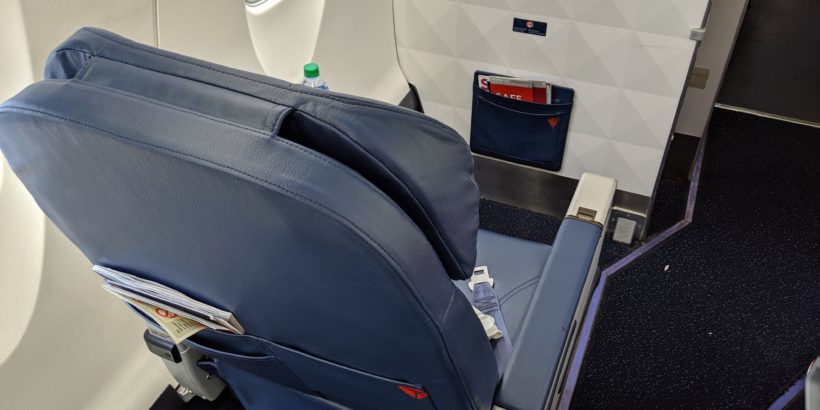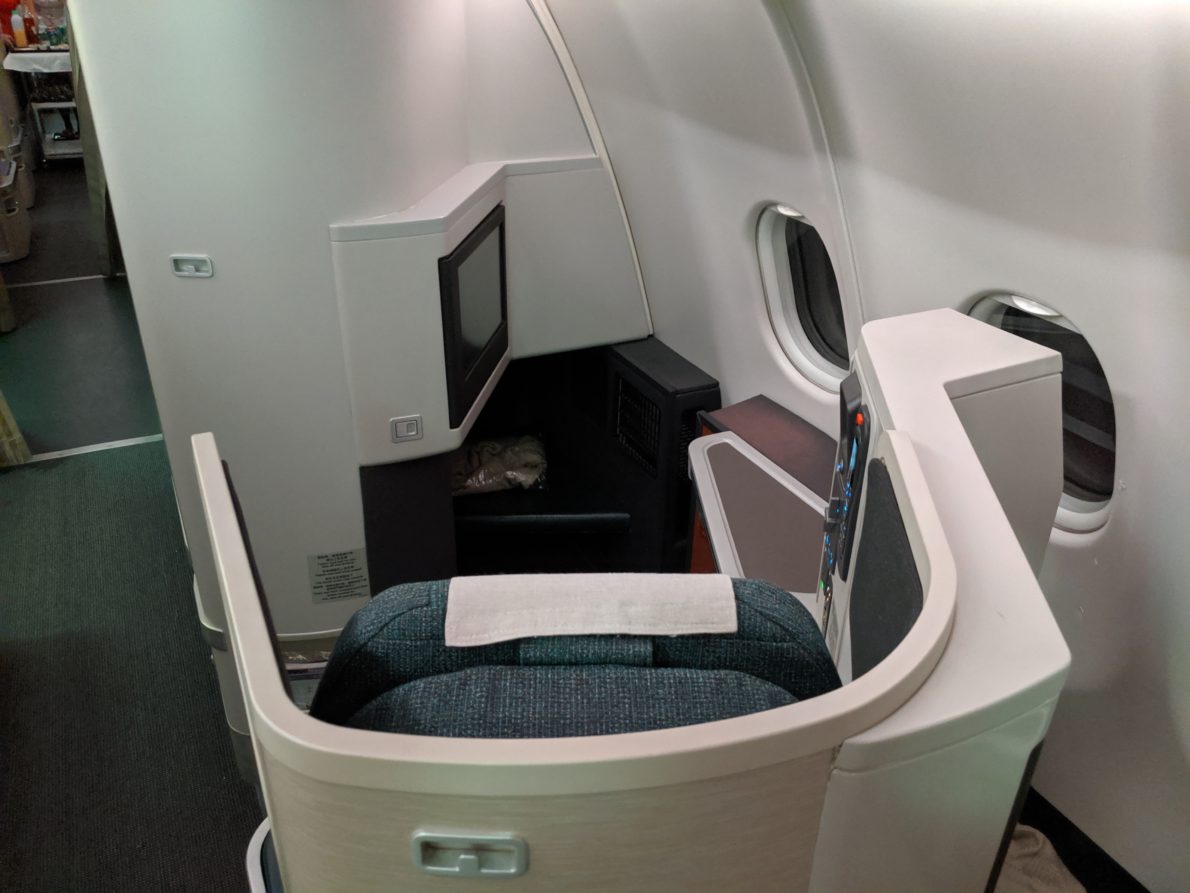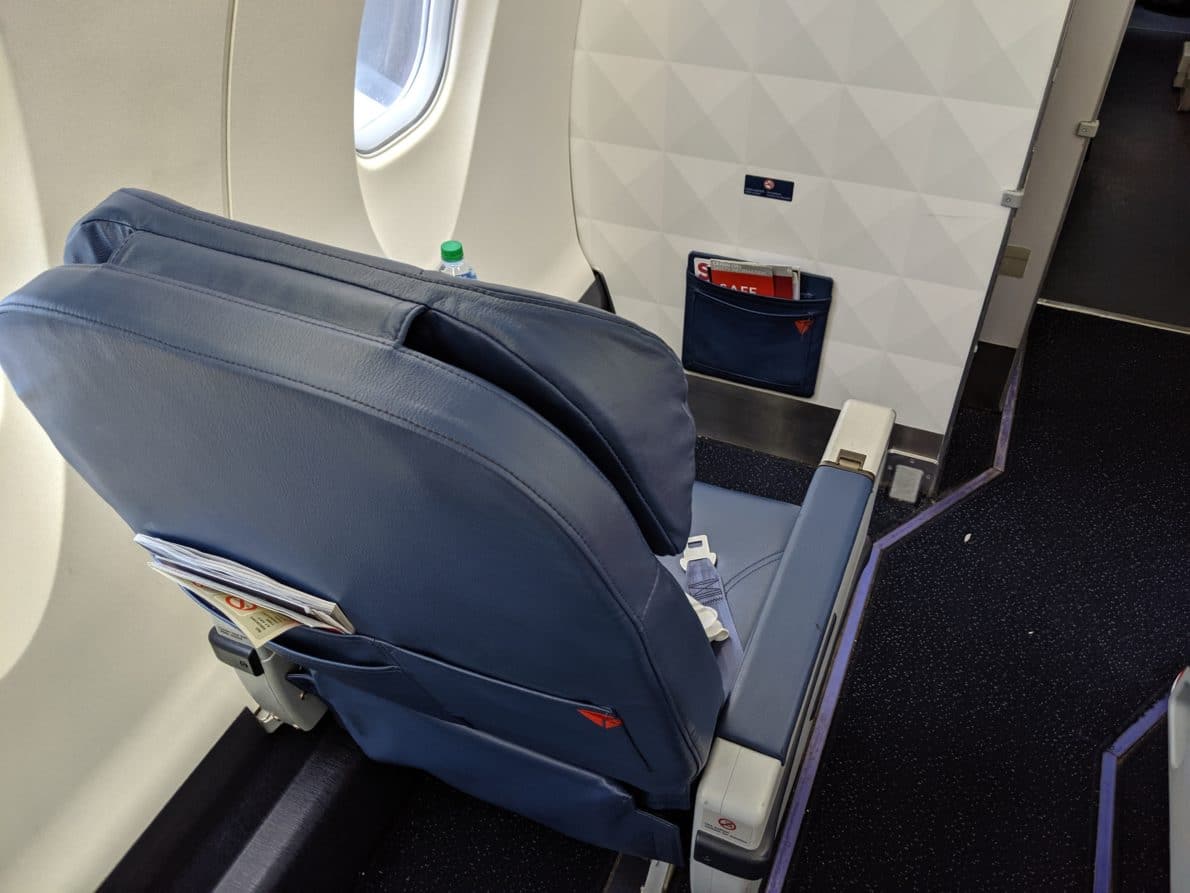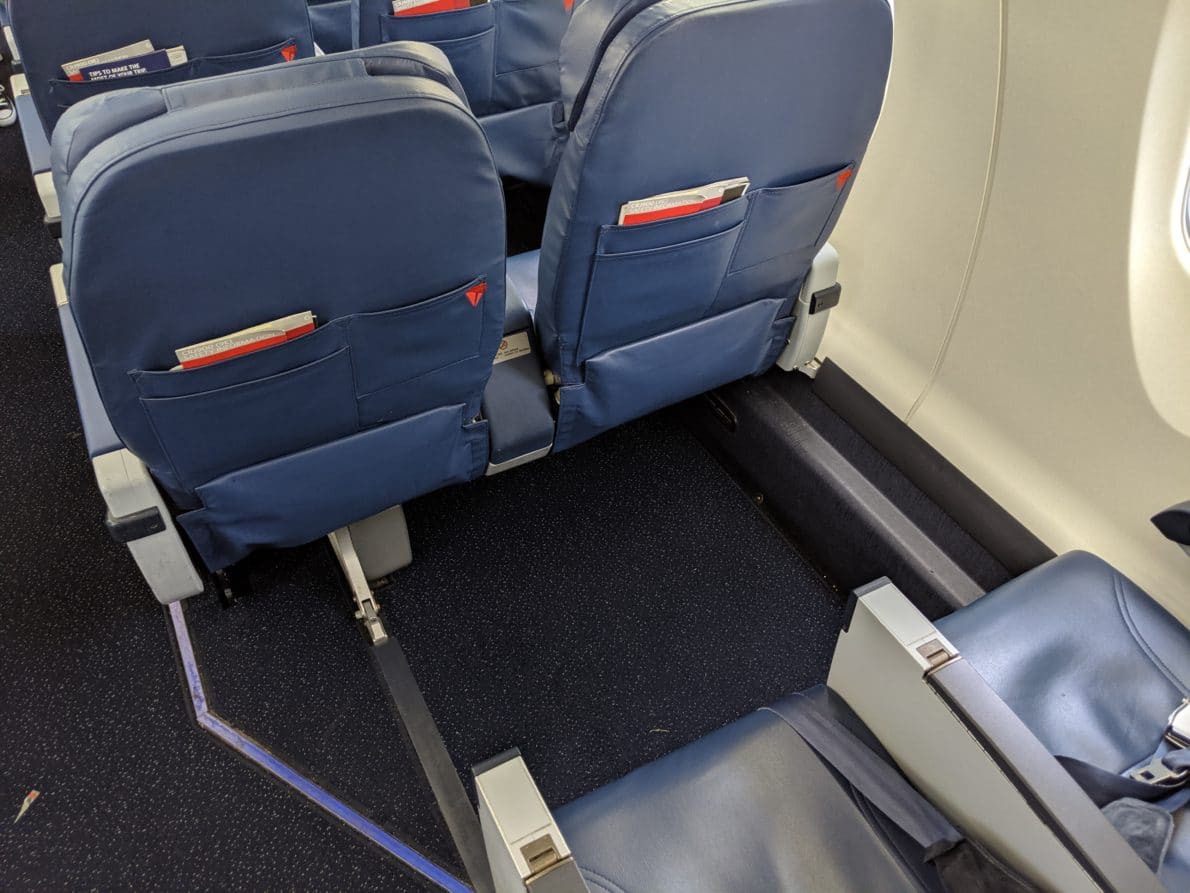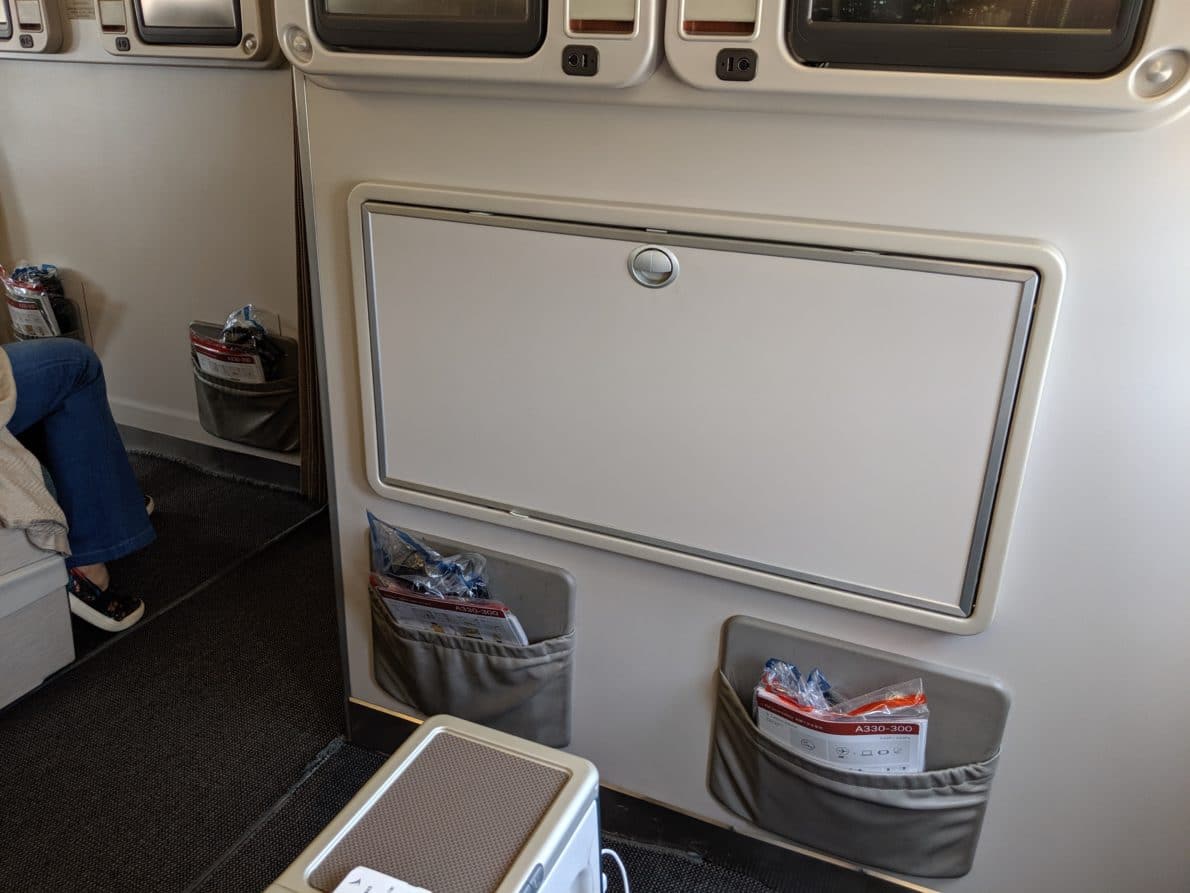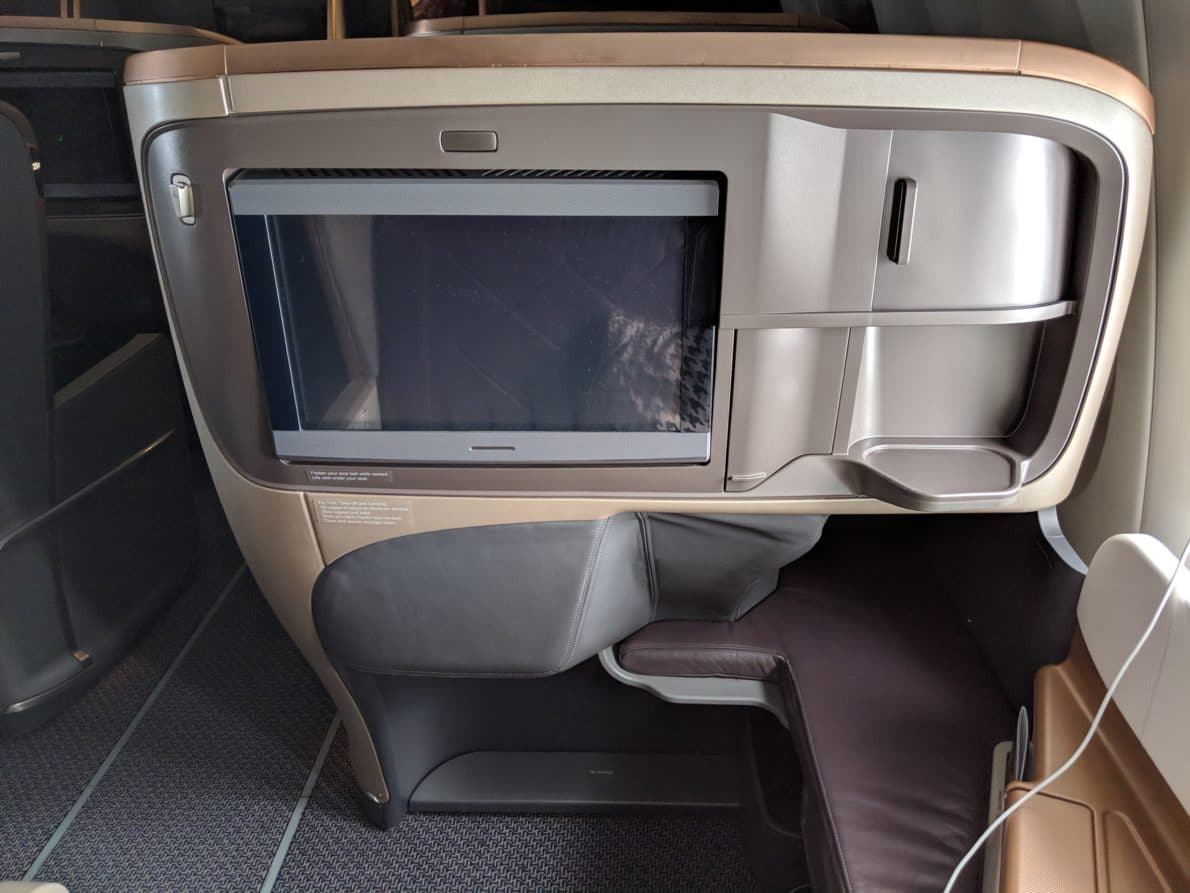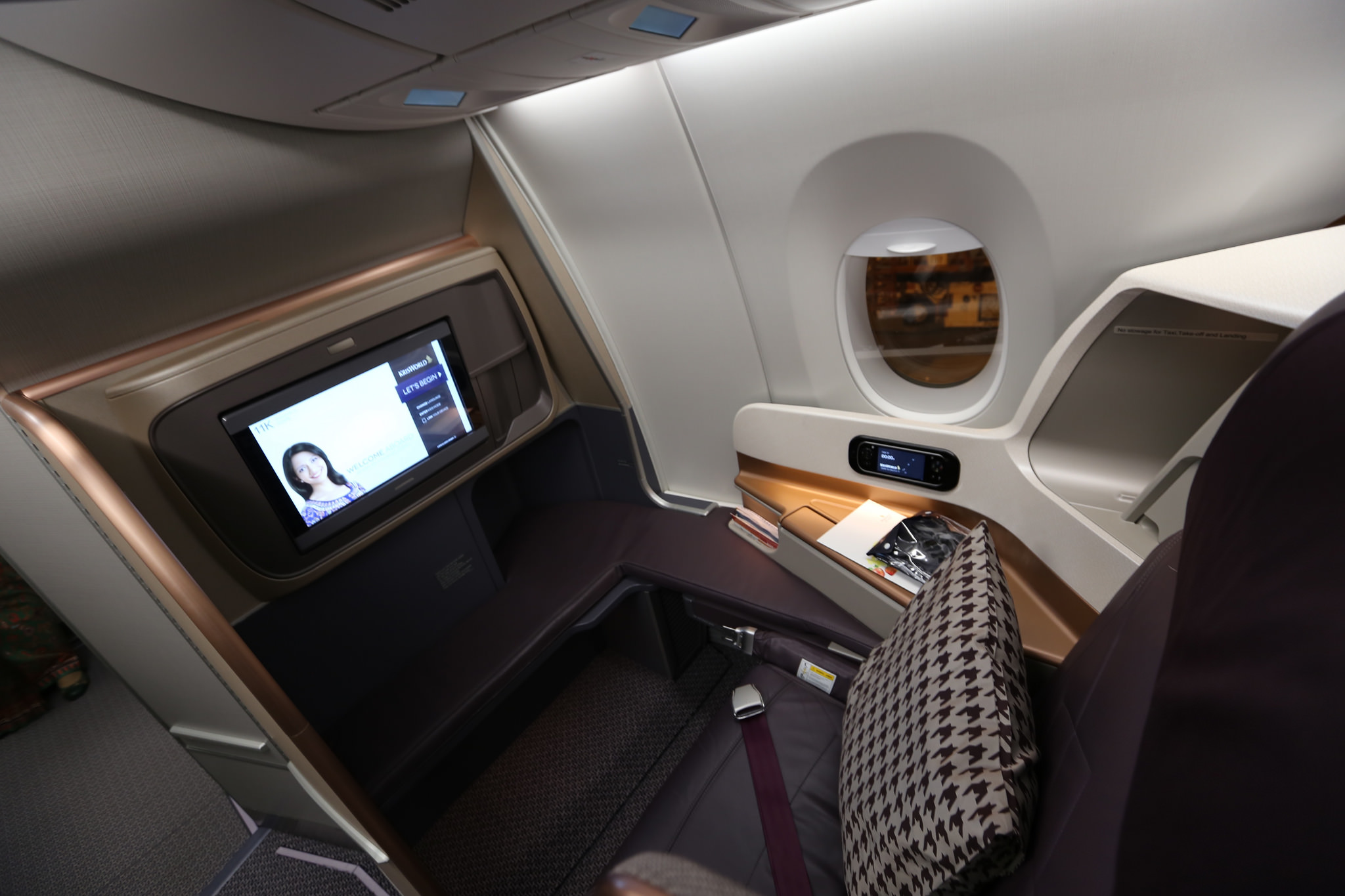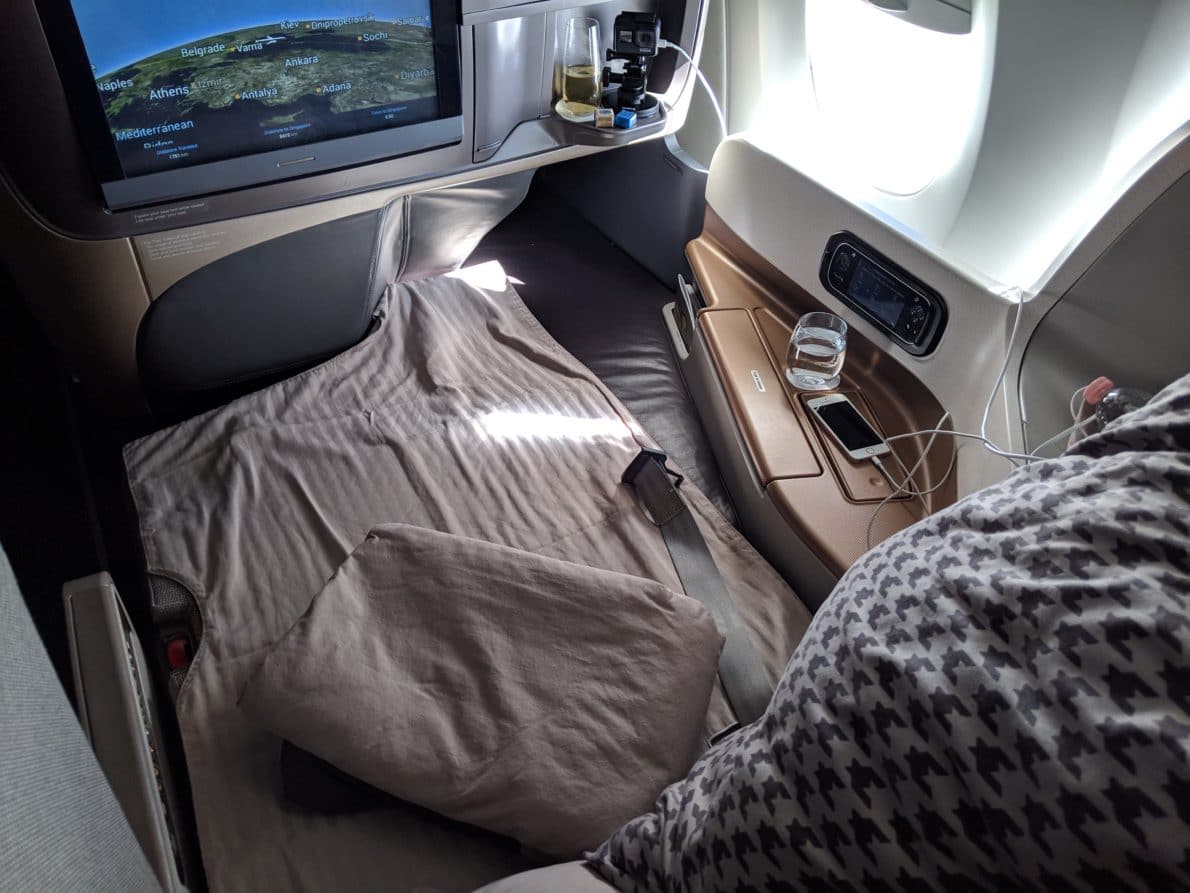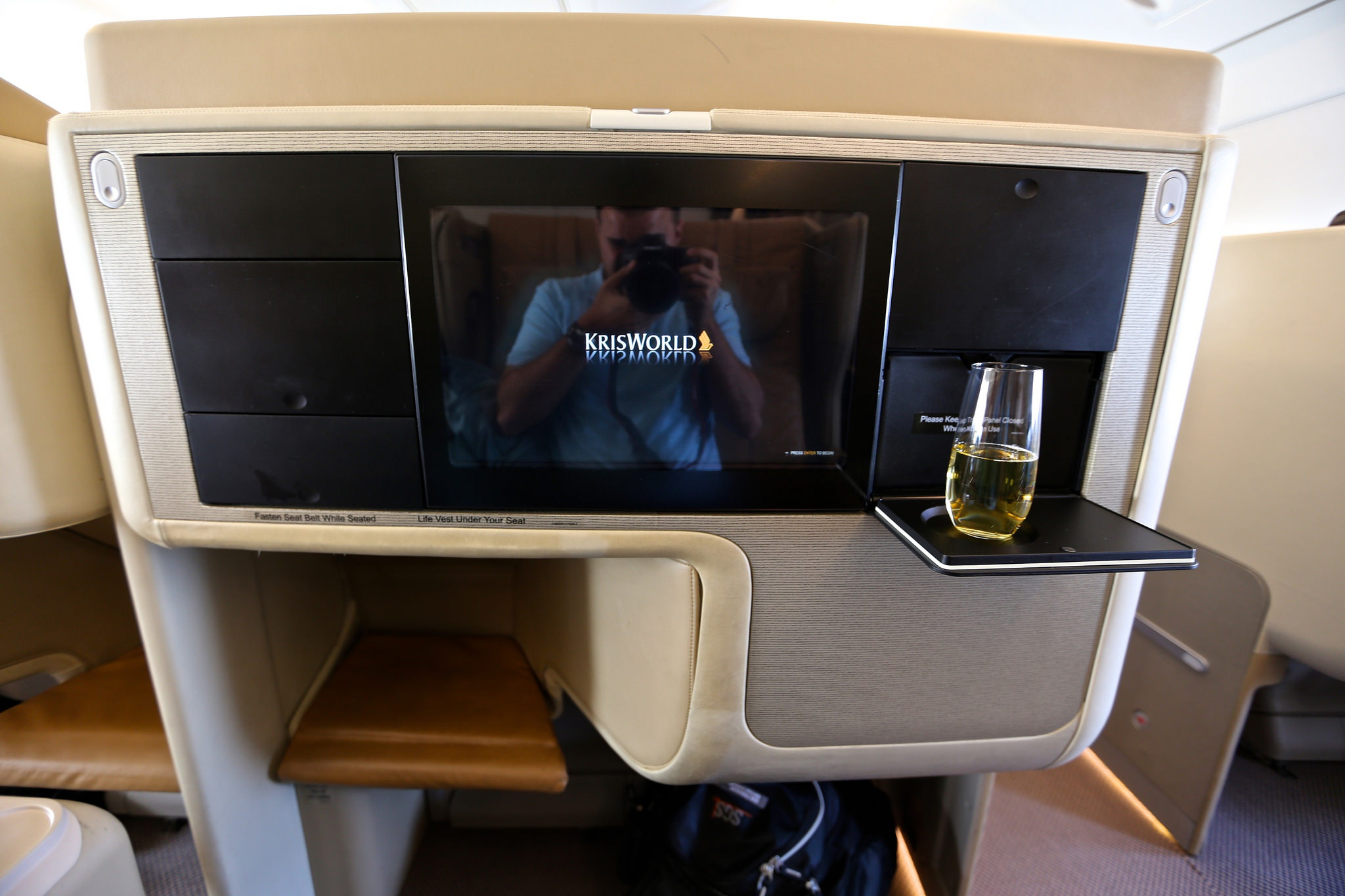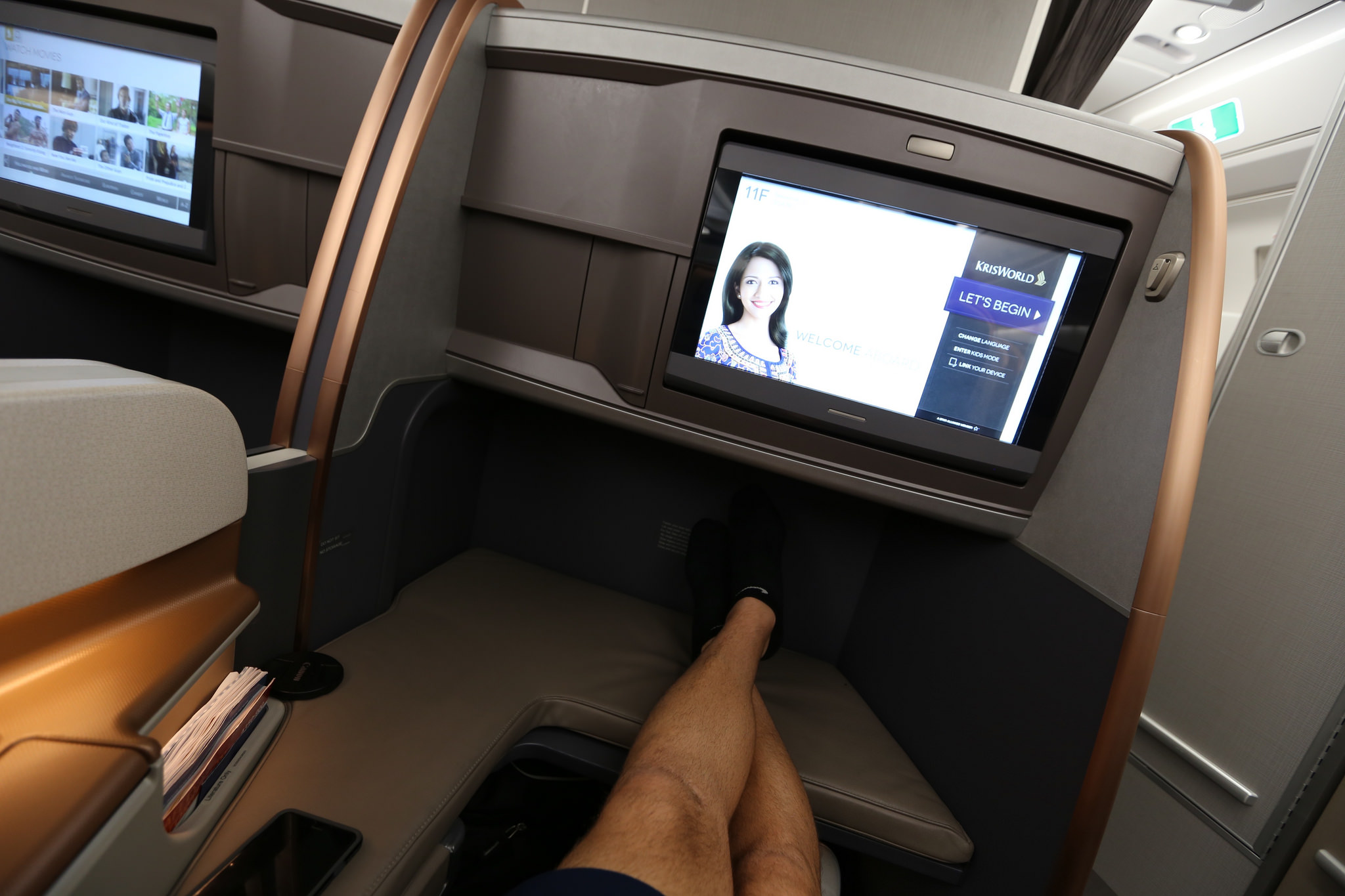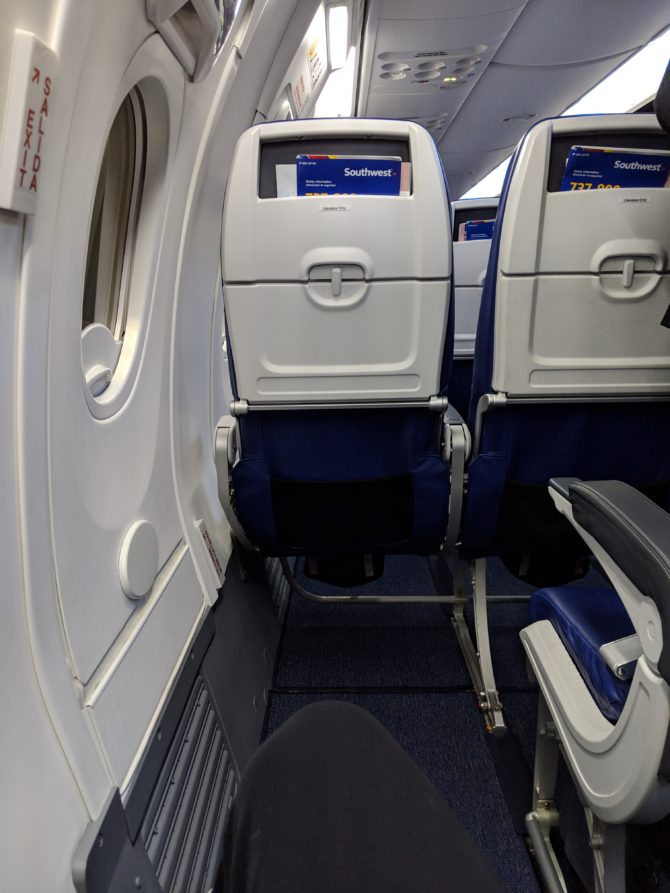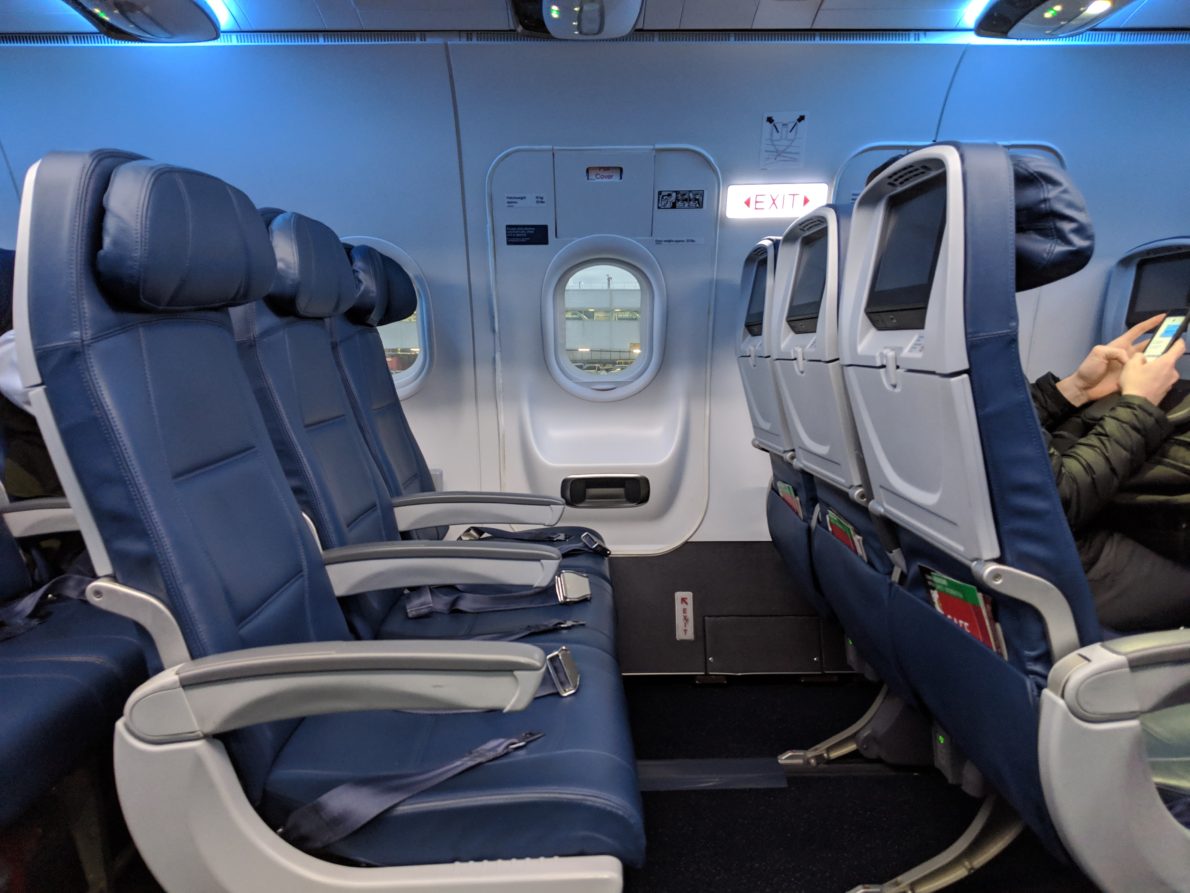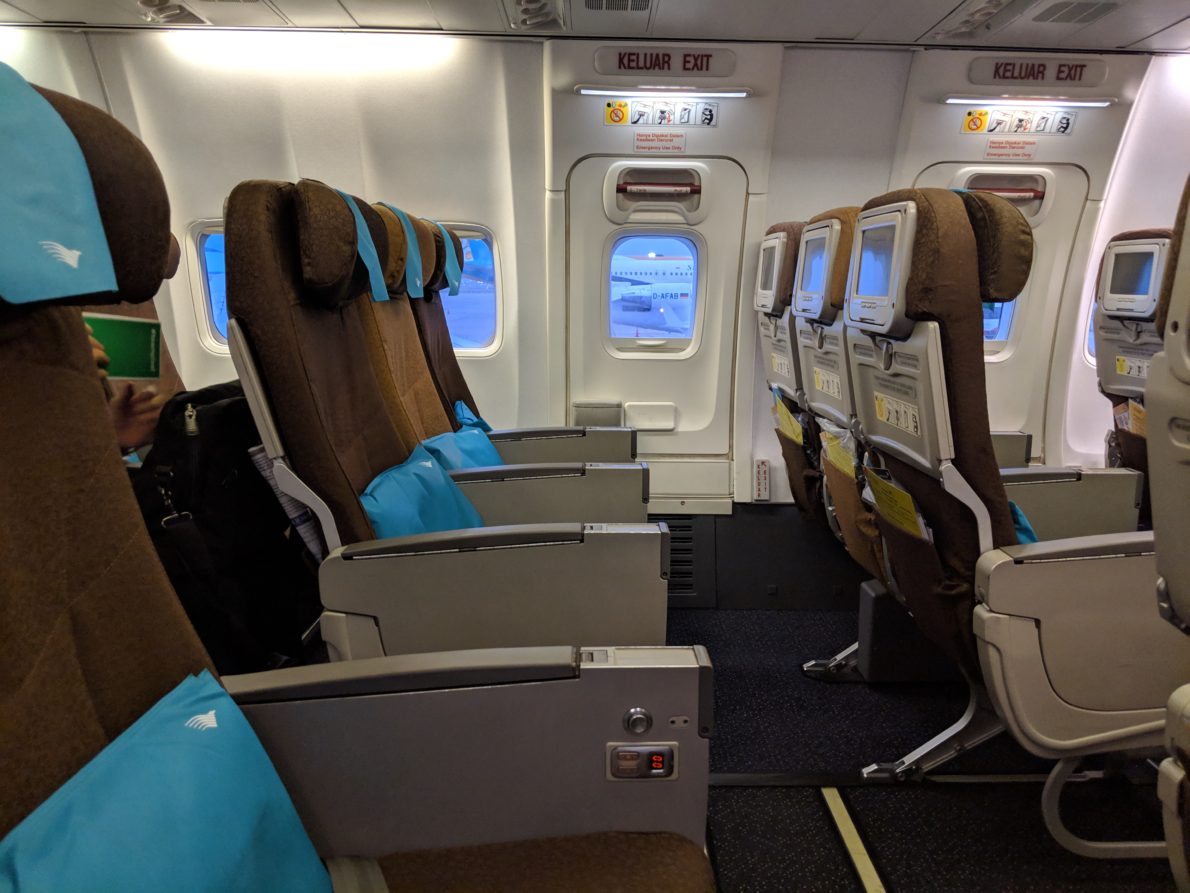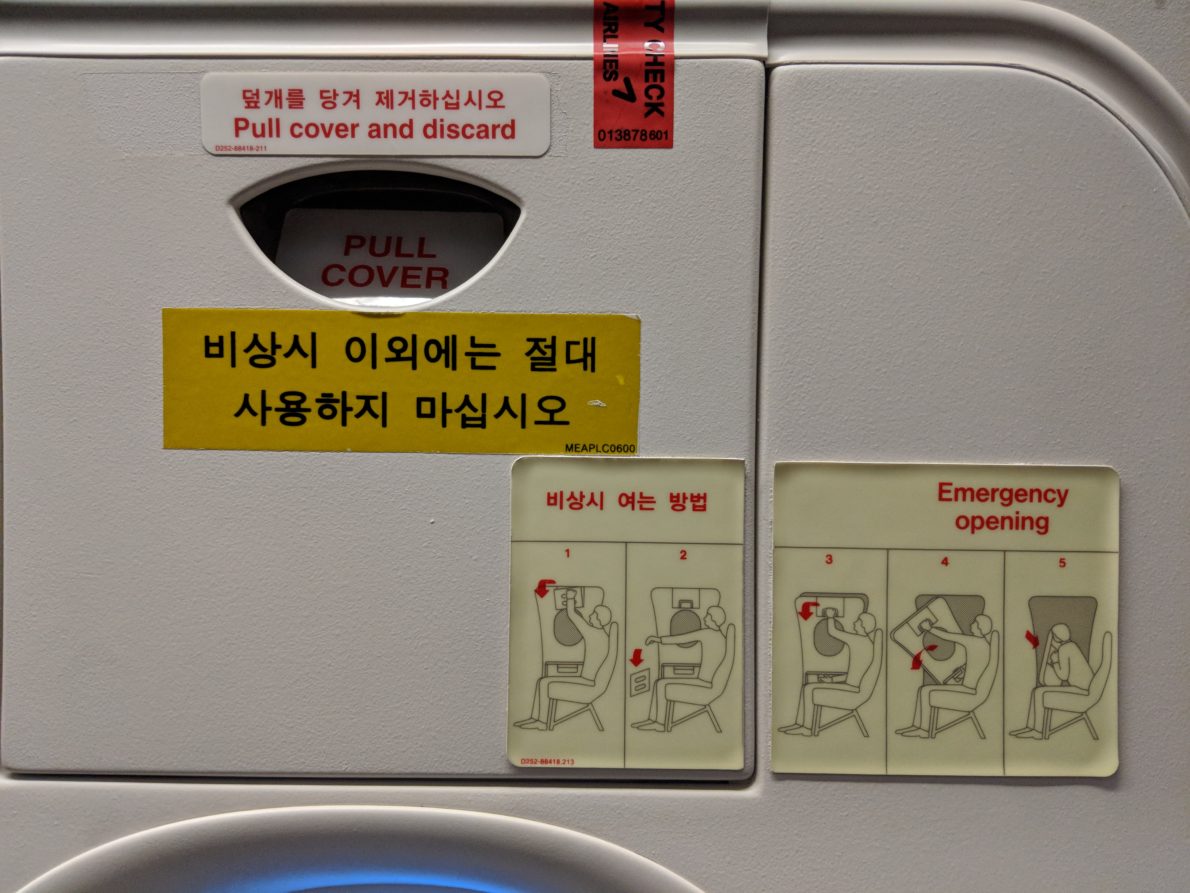Bulkhead seats are typically coveted by many for different features like the added legroom, but to some bulkhead seats are nothing more than a fake premium economy seat with numerous disadvantages (and annoyances). In this article, I go over the pros and cons for bulkhead seats along with some insight into airplane bassinets and how bulkhead seating can vary with different airlines like Singapore Airlines.
Table of Contents
What is a bulkhead seat?
An airplane bulkhead seat is the very first seat in a cabin or after a division between two cabins. Sometimes the seat will be behind a wall, but other times it could be behind a seat or some other type of division between cabins.
Bulkheads on aircraft will usually be considered a wall in front of seats or when cabin classes change. For example, the first economy class seat behind first class will be regarded as a bulkhead seat.
Traditionally, bulkheads look like the pictures below — it’s simply a seat that is right after the “wall” in the cabin.
However, bulkheads come in different shapes and sizes. Bulkhead seats are not defined by a wall, but also a change in class. Typically you can find this on regional aircraft like a 737, A320, A319, CRJ, E170, E190, etc. You can see what I am describing in the picture below.
As you see above, these two bulkhead seats on this Delta CRJ are entirely different, yet the seats are still considered bulkhead seats.
The differences will be different for each airline and aircraft as seat configurations will vary. For example, the economy seat behind the first class cabin has more legroom and allows the passenger to store their personal item under the seat in front of it.
However, for a bulkhead seat facing the wall, no floor storage is allowed. Therefore, you cannot have your items readily accessible.
Tip: Use the free app WalletFlo to help you travel the world for free by finding the best travel credit cards and promotions!
Bulkhead seats pros and cons
There is a famous post on FlyerTalk from 2006 about bulkhead seats are the worst. Then there are the commenters below that argue why bulkhead seats are the best seats on the plane.
In the end, it really depends on the airline and aircraft configuration. Many variables come to a bulkhead seat being the best seat or one of the worst seat on the plane.
Pros of a bulkhead seat
Just like everything in life, there will be pros, but it’s up to you to decide what you value for the right seat for you.
Sometimes greater legroom
Bulkhead seating can offer more legroom compared to the other seats in the same cabin. Typically, if there is no confining wall, the legroom will be about 3 to 7 more inches than regular seats which is pretty dramatic!
No one reclines in your face
You’re relaxing watching a film or working on your laptop and then suddenly the person in front of you reclines…. right in your face. This is where bulkhead seats make a huge difference. No one will recline into your headspace.
You will get served sooner
Depending on how the airline serves passengers, if you’re seated in a bulkhead seat, you will most likely be served first as flight attendants start from the lowest number row and move towards the back of the plane.
This means you can get your snacks, meals, and drinks served sooner rather than later. And in those cases where they run out of certain items, you probably won’t get stuck with the slim pickin’s.
Closer to the front
Bulkhead seating typically is in the front of the cabin. This means you can deplane much quicker than the passengers behind you. However, widebodies bulkhead seating might be in the middle of the cabin too.
Easier to exit your seat
No matter if you’re seated in the aisle, middle, or window bulkhead seat, being able to stand up with more significant room and no worries about hitting the seat in front of you are much better than squeezing yourself out avoiding the person seated in front of you.
Cons of a bulkhead seat
Just like everything in life, there will be cons, but it’s up to you to decide what you value for the right seat for you.
No luggage storage
Most economy bulkhead seats will not have any floor storage.
When there is a wall you’re not allowed to store any piece of luggage on the floor as it would block you in an evacuation. However, in some cases, if your seat is a bulkhead seat behind another seat, as shown above, then you can store your luggage.
The lack of storage could be compounded by a small overhead storage bin compartment directly above your seat. You should be able to use other storage compartments but if you arrive late those may be full. So I recommend boarding on time if you have the bulkhead.
Economy seats have less width
In economy, your tray table will likely pop out of the armrest which means you have less width and an armrest that you cannot move. For passengers of size, this can be a major problem.
Proximity to lavatories
Most bulkhead seats will be close to lavatories. This can cause more foot traffic by your seat causing more noise and disruptions, so keep your noise-cancelling headphones handy. Also, don’t forget the smells that might come from the lavatory…
Proximity to the galley
Being close to the galley is nothing special, and to me, I hate the noise and light the galley generates. Everything from the flight attendants preparing for meal service to the light from the galley seeping past the curtain that is not closed. And then there is the added con of US carriers not having a noise dampening curtain that barely blocks any light just to save a buck.
Sometimes less legroom
Some bulkhead walls will limit the amount of legroom you have. For people with long legs or big feet, this can be very uncomfortable.
Of course, it depends on the airline and aircraft configuration, but this can be common with foreign carriers that don’t charge extra for bulkhead seats.
Airplane bassinet seats
Airlines, especially foreign airlines, will prioritize bulkhead seats for parents traveling and in need of a bassinet. Bulkhead seats give the parents flying a with a lap infant under 20lbs the ability to reserve a bassinet, a detachable cot, so the parents don’t have the hold the infant for many hours on hand.
Airplane bassinets allow the parents to give the infant room to spread out in the bassinet and relax, along with the parents. Plus, there are accessories for bassinets that allow it to be easier for the parents to block the cabin lights and noise for the infant to sleep.
There are a few safety restrictions when it comes to infants flying in a bassinet. The infant must be 20lbs or less, cannot have the infant use the bassinet during take-off, landing, and heavy turbulence (related: Turbulence Maps). In reality, bassinets aren’t so safe as they aren’t fixed to the plane and are attached by a few mechanisms or velcro. This is why you cannot leave your infant in the bassinet unattended.
Bassinet seats must be reserved prior to departure when there is a lap infant on the reservation. The best way to do this is by calling the airline as they will reserve it since some airlines don’t have the ability for you to reserve it online.
To learn more about bassinets and if an airline offers it, I suggest checking with the airline directly by calling, checking SeatGuru as it will label seats on airline’s aircraft if they have a bassinet option or not, or check out the blog post by Have Baby Will Travel.
Bulkhead makes a difference for some airlines seats
This is particularly true in business class. Airlines like Singapore, Qatar, Delta, and China Eastern business class differ from non-bulkhead seats because the footwell and pitch are greater.
Take Singapore Airlines business class seat for an example as this is a regular non-bulkhead seat:
Now compare that to this Singapore Airlines business class bulkhead seat:
As you can see the footwell and the length of the seat can be different. You can see that the non-bulkhead seat’s footwell is to the side and pretty narrow. However, the bulkhead seat allows you to stretch out without a limited footwell as the bulkhead seat has an ottoman.
Of course, I am just using Singapore Airlines as an example, but as I wrote above, bulkhead business class seats have a slightly wider footwell and are longer on other airlines.
Tip: Use WalletFlo for all your credit card needs. It’s free and will help you optimize your rewards and savings!
Bulkhead vs emergency exit row seats
You might have heard about exit row seating and possibly saw the amount of room exit row seats have compared to regular economy.
Compared to bulkhead seats, exit row seats come with a lot of legroom (typically, 3-9 more inches than a regular economy seat) and still allow you to store your personal item under the seat in front of you on US carriers. For most foreign carriers, you cannot store your personal item under the seat in front of you.
Sometimes, exit row seats have the same seat width as regular economy seats. This means you don’t have to worry about a tighter experience and the armrest is moveable. This doesn’t hold try all the time as it depends on the airline and aircraft.
Here is an example of an exit row with moveable armrests:
And here is an example of an airline with fixed armrests:
Yet, with anything about flying, there is a catch about exit row seats. Some exit row seats aren’t reclinable. Thus, you must check particular seat maps on SeatGuru to see if the exit row seat you want to reserve can recline or not. The good thing about no reclining is that the seat in front of you cannot recline into your personal space because it’s the exit row.
To be able to reserve an exit row seat, you need to be able to speak English or that carriers country’s native language if it’s not English. You must be 15 years or older. You cannot be pregnant or have any disabilities as in an event you must assist in an evacuation. These type of restrictions limit the type of people sitting in these seats.
Comparing bulkhead to exit row seats, you might be thinking to yourself, both offer pros that give more benefits and cons that limit things that you can and cannot do. Both bulkhead and exit row seats are charged as a premium, but you can select both at check-in.
For me, I prefer exit row seats. Exit row seats typically offer more legroom than bulkhead seats behind a wall and keep the seat width most of the time (depending on the carrier and aircraft configuration.)
How to choose the best airplane seat
No matter what class, selecting the best seat on the plane is essential for comfort and privacy.
Daniel wrote an article with 17 tips for finding the best seat on a plane. He writes tips and tricks of identifying the “best” seat in the cabin you selected. Plus, he highlights how different type of people will want a different type of seat and location.
Final word
Bulkhead seats, like anything about flying, cannot be consistent over different airlines. Each airline and aircraft will be slightly different in terms of privacy, comfort, noise, and light when it comes to bulkhead seats. I hope this summarizes bulkhead seats and helps you decide if bulkhead seats are right for you.
Steve is a senior contributor for UponArriving and spends close to 300 nights a year in hotels while traveling the world and trying to eat as much as he can. Steve has spoken at summits like the FBZ Elite Summit in Austin. He holds top-tier elite status with almost every hotel program as a Marriott Ambassador, Hyatt Globalist, Hilton Diamond, IHG Spire, and GHA Black. Utilizing credit card points and miles, Steve takes over 100 flights per year while experiencing some of the top first class and business class cabin in the sky.

